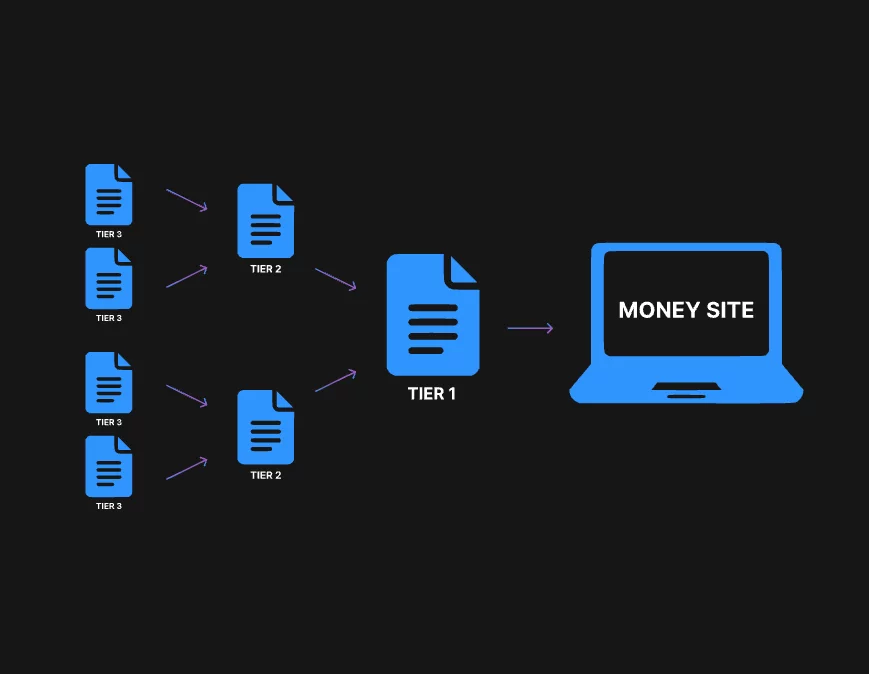Apple App Store Optimization: The Definitive Guide 2023
Welcome to the world of App Store Optimization, a world where algorithms reign supreme, and a world where understanding a few technicalities can make or break your app’s success. If you’re an app developer, a marketer, or someone curious about optimizing your app for the Apple App Store, you’ve come to the right place. This guide aims to provide a comprehensive look at Apple App Store Optimization (ASO) for the year 2023, keeping up-to-date with the latest trends and practices. As we plunge into this fascinating journey, let’s familiarize ourselves with the intricate web of strategies, techniques, and best practices that make ASO what it is today.

What is ASO?
In a nutshell, ASO is a set of strategies and techniques aimed at improving an app’s visibility within app stores, with the ultimate goal of increasing downloads and user engagement. Think of it like SEO, but for mobile apps. The nuances of ASO are many, and they require more than just a rudimentary understanding of marketing. In this guide, we’ll dissect everything you need to know about ASO, from understanding metrics and key performance indicators (KPIs) to mastering the visual elements that can make your app stand out in the crowded marketplace.
ASO marketing: why does it matter
With millions of apps available across various app stores, standing out from the crowd and capturing your target audience’s attention can be a challenging endeavor. This is where App Store Optimization (ASO) marketing comes into play, offering a strategic approach to maximize your app’s visibility, downloads, and overall success. Let’s delve into why ASO marketing matters and how it can make a significant difference in your app’s journey.
1. Visibility in a Crowded Marketplace. Imagine opening an app store and searching for a specific type of app, such as a weather forecasting tool. Chances are, you’ll be overwhelmed by the sheer number of results. ASO helps your app rise above this sea of competition by optimizing various elements, including the app’s title, keywords, and description.
2. Higher Quality Traffic. ASO marketing not only helps increase your app’s visibility but also ensures that the traffic it attracts is of higher quality. When users discover your app through targeted keywords, they are more likely to have a genuine interest in its functionalities.
3. Cost-Effectiveness. Compared to many other marketing strategies, ASO offers a cost-effective approach to driving app growth. While paid advertising can certainly help in boosting visibility, it often requires a significant budget to maintain. ASO, on the other hand, involves optimizing the content that you already have, making it more appealing to both users and app store algorithms.
4. Enhanced User Experience. An essential aspect of ASO is optimizing your app’s description and visuals to accurately portray its features and benefits. By providing potential users with a clear understanding of what your app offers, you set the right expectations.
5. Continuous Improvement. ASO marketing is not a one-time task but rather an ongoing process. As the app market evolves and user preferences change, your ASO strategy must adapt accordingly. This commitment to continuous improvement ensures that your app remains relevant, competitive, and aligned with users’ needs. Regularly monitoring key performance indicators (KPIs) and tweaking your ASO strategy can help you stay ahead of the curve.
6. Global Reach. The beauty of ASO marketing is that it allows your app to reach a global audience. By optimizing your app for different languages and regions, you can tap into international markets and unlock new growth opportunities. This is particularly beneficial if your app offers value to users beyond a specific geographic location.
Understanding ASO Metrics
If you want to master the art of App Store Optimization (ASO), you can’t ignore the metrics that gauge its success. Think of these metrics as the vital signs for your app’s health. Monitoring them can give you valuable insights into how well your ASO strategies are working
Importance of App Ratings and Reviews
Let’s be honest, would you download an app with a 2-star rating? Most likely not. Reviews and ratings significantly influence the conversion rate. Positive reviews act as social proof and encourage more downloads. They also contribute to better keyword ranking, making them doubly important in your ASO strategy.
By understanding and analyzing these metrics, you’re not just playing a guessing game; you’re making data-driven decisions that could spell the difference between the success and failure of your app.
ASO keyword research
The cornerstone of any ASO strategy is effective keyword research. This involves identifying the words and phrases that potential users might use to find an app like yours. Effective keyword research is not just about identifying high-traffic keywords but also understanding the user intent behind those keywords. After all, what good is driving traffic if those users don’t find what they’re looking for and convert?

Using iOS ASO tools for Keyword Research
As with SEO, there are specialized tools to help you in your keyword research for ASO. These tools not only help you find keywords but also offer insights into search volume, difficulty, and even your competition.
Keyword Research Tools and Key Features:
- Google Keyword Planner: Search volume, competition, ad group ideas
- Keyword Tool: Keyword suggestions, question-based keywords, prepositions
- Ubersuggest: Keyword ideas, content ideas, backlink data
By now, it should be clear that ASO isn’t a one-time effort; it’s an ongoing process that requires continuous monitoring and adjustment. As the market evolves, so should your ASO strategies.
Visual Elements and ASO
Visual elements play an indispensable role in your App Store Optimization strategy. While keywords and other textual elements help get users to your app’s page, the visuals are what seal the deal.
App Icons
The app icon is the first visual element that catches a user’s eye when they stumble upon your app in the App Store. It’s like the face of your brand, and it needs to be not just attractive but also memorable. The icon should give potential users a glimpse into what your app does while standing out in a crowded marketplace.
ASO video strategy
Screenshots and video previews are your opportunity to showcase your app’s interface and features. These elements work to tell a story about what users can expect from your app. While the App Store allows you to upload up to ten screenshots, make sure that each one serves a purpose. The first two or three screenshots should highlight the most important features or benefits of your app, as they will appear in the search results.
A video preview can be a game-changer, particularly for apps that have dynamic content or complex features. A short, 15 to 30-second video can provide a quick walkthrough of your app, highlighting its key features and functionalities.
| Type of Visual Element | Importance in ASO | Best Practices |
|---|---|---|
| App Icon | High | Keep it simple, memorable, and aligned with your app’s functionality. |
| Screenshots | Medium to High | Showcase key features, use text overlays for context. |
| Video Previews | Medium | Keep it short, focus on main features. |
The integration of compelling visual elements into your App Store listing should not be an afterthought; it’s a critical component of your ASO strategy. When done correctly, these visuals can significantly enhance your app’s appeal, complementing your textual optimizations to deliver a potent one-two punch of discoverability and conversion.
ASO: pros and cons
App Store Optimization, like any marketing strategy, has its upsides and downsides. While its benefits are manifold and can significantly elevate your app’s success, there are also challenges and limitations that developers need to be aware of. Let’s dive in and examine both the pros and cons of ASO to give you a balanced perspective.
| Aspect | Pro or Con | Summary |
|---|---|---|
| Aspect | Pro or Con | Summary |
| Visibility | Pro | Increases the app’s chances of being found in search results. |
| Conversion Rates | Pro | Boosts the likelihood of downloads once users find your app. |
| Cost | Pro | Usually more cost-effective than paid advertising. |
| User Quality | Pro | Attracts more engaged and relevant users. |
| Competitive Edge | Pro | Provides an advantage over less optimized competitors. |
| Time Investment | Con | Requires ongoing effort and adjustments. |
| Immediate Results | Con | Results may take time to become apparent. |
| Algorithm Adaptability | Con | Need to adjust to frequent changes in app store algorithms. |
| Keyword Limitations | Con | Limited number of effective keywords and high competition. |
| Diminishing Returns | Con | Continued efforts may yield less impactful results over time. |
Effective tools for mobile app store optimization
If you’re serious about nailing your App Store Optimization, you’ll soon realize that going at it manually will only get you so far. The market is flooded with a variety of tools designed to simplify the process and provide invaluable insights. From keyword research and tracking to A/B testing and monitoring user reviews, these tools offer functionalities that can cover every facet of your ASO strategy.
Some of the most popular tools include AppAnnie, Sensor Tower, and MobileAction. These tools offer a range of features that can simplify the entire optimization process. AppAnnie, for example, is highly regarded for its in-depth analytics and market data, giving you a pulse on market trends and competitor strategies. Sensor Tower provides a robust suite of tools designed for keyword optimization and tracking. Meanwhile, MobileAction offers a full-stack ASO suite, covering everything from keyword optimization to competitor tracking.
Choosing the right tool can often boil down to your specific needs and budget. Most of these tools offer free trials, so it’s worth experimenting with a few before settling on the one that meets all your requirements. However, it’s crucial to remember that while these tools can provide insights and streamline your workflow, they’re not a substitute for an effective ASO strategy. You’ll still need to put in the hard work of research, testing, and iteration to truly succeed.

On a final note
ASO offers a plethora of benefits, such as increased visibility, higher conversion rates, and more quality user acquisition. However, it’s crucial to be aware of the limitations and challenges, like the time investment required and the constant need for adaptation to algorithm changes. Utilizing available tools can certainly ease the process, but the onus is still on you to put these resources to optimal use.
With the right combination of strategy, creativity, and analytics, ASO can become a significant growth driver for your mobile app. So the question isn’t whether you should invest in ASO, but rather, can you afford not to?






